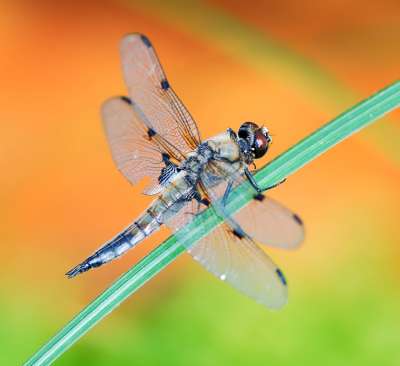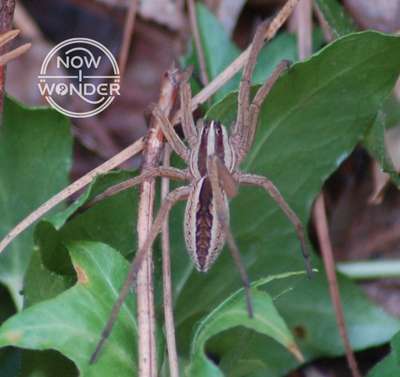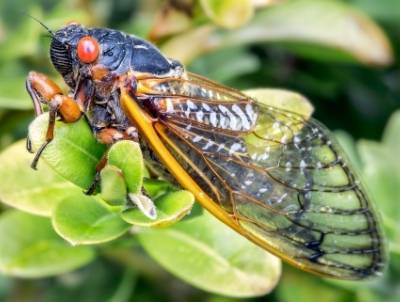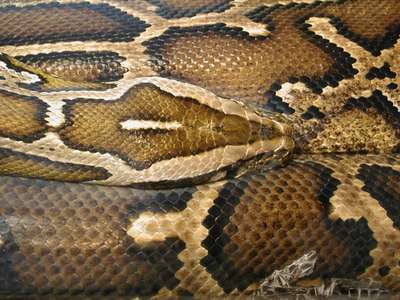Grasshoppers and crickets are familiar insects and have been studied extensively, especially because of the noise they make. Both are classified within Order Orthoptera so they share many characteristics in common. But they do not belong to the same Family, which indicates they have significant differences as well. This post examines the differences between these two insects.
Grasshoppers and crickets differ in size, body shape, color, lifestyle, and habitat. Both are jumping insects in Order Orthoptera that sing to attract mates. Grasshopper song sounds like a loud, continuous drone; cricket song is intermittent, chirping and considered more pleasant.
There are huge numbers of insects in the world and Order Orthoptera contains a huge number of species. The common terms of “grasshopper” and “cricket” can be challenging to use because there are so many different species of both.
For the purposes of this post, “grasshopper” refers to those short-horned species classified within Family Acrididae and “cricket” refers to the species known as “true crickets” classified within Family Gryllidae. The insects in these families are most like those that come to most people’s minds when they hear the generic names.
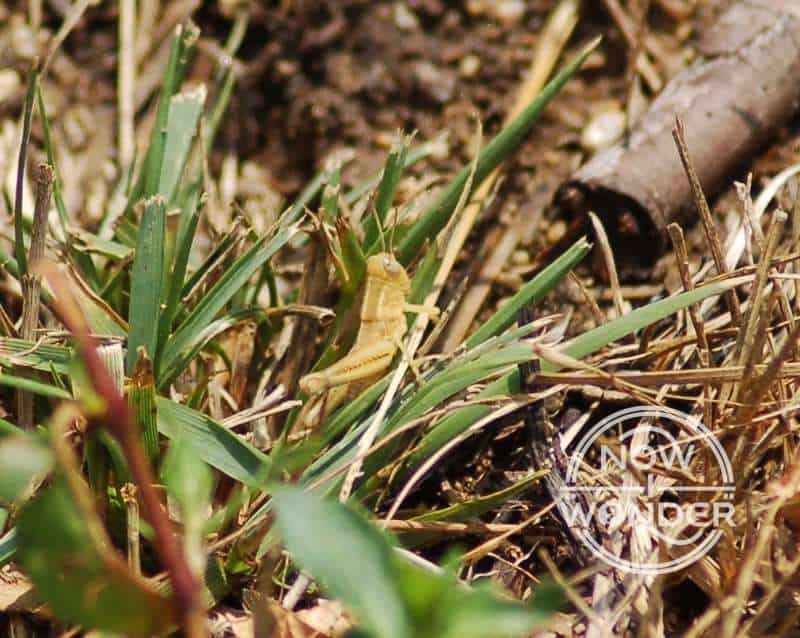
Crickets are much smaller than grasshoppers
Taken together crickets are medium-sized insects, ranging from 9-25mm long. Short-horned grasshoppers are much larger at 12 – 80mm long. More specifically, the Field Cricket (Gryllus pennsylvanicus) is 15-25mm (0.6 – 1in.). The Differential Grasshopper (Melanoplus differentialis) is 28-44mm (1.1 – 1.7in.) and the Southeastern Lubber Grasshopper (Romalea microptera) is a whopping 50 -70mm (2 – 2.8in) big.
Crickets have longer antennae than grasshoppers
Cricket antennae are long and thin – usually as long or longer than their entire bodies. Most of the time, they point forward but they are flexible enough to be bent back along the cricket’s body when needed, like when a cricket is crawling through a tight area.
Short-horned grasshopper antennae are much shorter and stumpier than those of crickets (thus the general name for species within Family Acrididae) with lengths less than half the grasshopper’s body. Their antennae also always face forward.
Crickets and grasshoppers have different body shapes
Cricket bodies are flattened from top to bottom, which help them access and hide in tight spaces. This helps them survive in their ground-based omnivore lifestyle and hide from predators but their flattened bodies have less room for powerful flight muscles.
Grasshopper bodies are flattened from side to side; usually, they are taller than they are wide. Their thoraxes are strong and can accommodate large flight muscles, which helps these insects fly to escape predators and disperse throughout their habitats.
Crickets and grasshoppers are different colors
True crickets are usually brown or black, which helps them blend into their environment as they move around at night. They rely on being inconspicuous to predators to survive and their brown/black coloration helps with this.
Grasshoppers come in a much wider range of body colors. Many short-horned grasshoppers are green or brown and blend into the plants they feed on. Others are brightly colored to warn predators against trying to eat them. This visual warning system is known as “aposematic coloration” and can be found throughout the insect world.
To learn more about one of the common short-horned grasshopper species that employs aposematic coloration, check out my post “What do grasshoppers do? A day in their life”.
Cricket and grasshopper “ears” are in different places
Both crickets and grasshoppers have tympanic membranes that vibrate in response to sound. This is a vital feature to the survival of their species as singing to attract mates is a huge part of their reproductive behavior. The difference between the two types of insects lies in the location of the tympanic membranes.
A cricket’s tympanic organs are located on their front legs while a short-horned grasshopper’s are on its first abdominal segment.
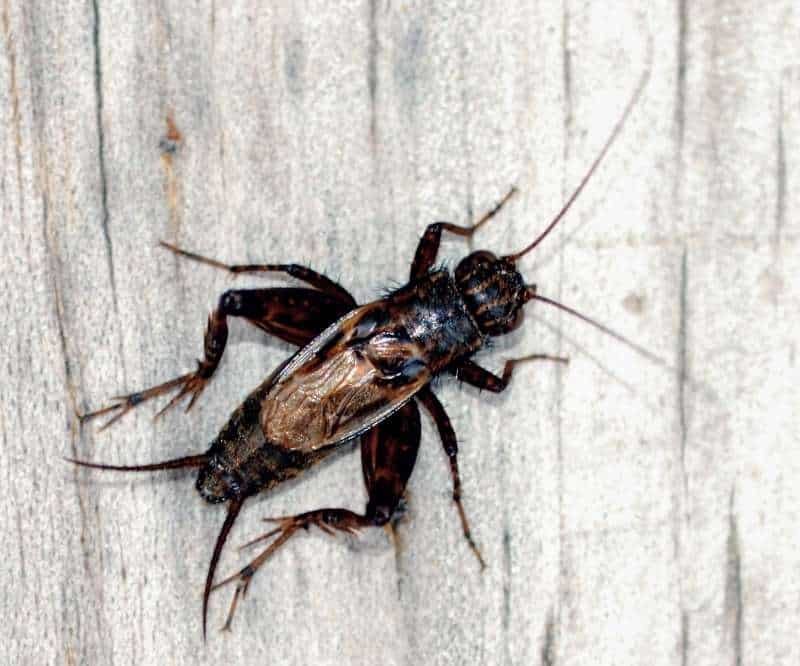
Crickets have abdominal cerci; grasshoppers don’t
Crickets have unique body structures on the tips of the abdomens called “cerci” which grasshoppers lack. Looking like a pair of long spikes protruding from the end of the insect, a cricket’s cerci are tactile sensory organs that it uses during mating.
Field cricket males lure females to them using their chirping songs but they are unique among insects in that they have no way to clasp the female to copulate. Instead, Field Cricket males must transmit a “spermatophore” to the female very quickly while their bodies are in contact.
Spermatophores are capsules or packets that contain sperm. Crickets use their abdominal cerci to position themselves properly during mating so the spermatophore transfer from the male to the female can be accomplished as quickly as possible.
In Field Crickets, this transfer occurs in 15-90 seconds. (Alexander and Otter 2009). In contrast, male and female grasshoppers bind together during copulation and can remain joined for a much longer time.
Both female crickets and female grasshoppers lay eggs in soil using their ovipositors, which are needle-like or sword-like structures found at the tips of their abdomens. Crickets lay eggs one at a time; grasshoppers lay masses of 8 – 25 eggs at a time.

Crickets hop forward; grasshoppers jump up
Like other species classified within Order Orthoptera, cricket hind legs are adapted for jumping. But they don’t jump as high or travel as far per jump as short-horned grasshoppers. Crickets really hop forward more than they jump up, although they can leap to impressive heights when motivated.
Crickets are active at night and dark colored; they rely on camouflage and ducking into protected spaces to escape predators. Therefore, keeping closer to the ground with every hop helps them get to a hiding spot as quickly as possible.
Grasshoppers are active during the day and easy for predators to spot and track. When attacked, their priority is to put as much distance between themselves and their attackers as possible as quickly as possible. Therefore, they evolved strong legs that can propel their heavy bodies into much higher and more forceful jumps than their cricket cousins.
Crickets walk; grasshoppers fly
Another major difference between true crickets and short-horned grasshoppers is the size and functionality of their wings.
The wing size of individual field crickets can differ within a population. Most crickets have short wings that barely cover the first several abdominal segments and limits their ability to fly but other individuals have functional wings that extend to the tips of their abdomens (Capinera 2001). However, even the crickets that can fly usually don’t.
Crickets in general are pretty sedentary throughout their adult lives, especially the males. Because they are omnivores who eat both plant and animal matter, they can find food easily within small areas. Males usually sit and wait for their songs to attract females to them; females travel longer distances to reach the males and tend to rove more than males in general.
In contrast, grasshoppers disperse over much wider areas. Although short-winged exceptions like the Southeastern Lubber grasshopper exist, grasshopper wings are usually long, extending to the tips of their abdomens or beyond. Strong flight muscles power the wings.
While jumping remains the primary means of locomotion for grasshoppers, they use their wings to increase both height and distance per jump. This allows them to cover much more ground than their cricket cousins which prefer short hops. Swarming locusts have even been recorded using their wings to loft themselves on thermals to heights of 3000m (Chapman 2009) – a feat that a field cricket could never dream of.
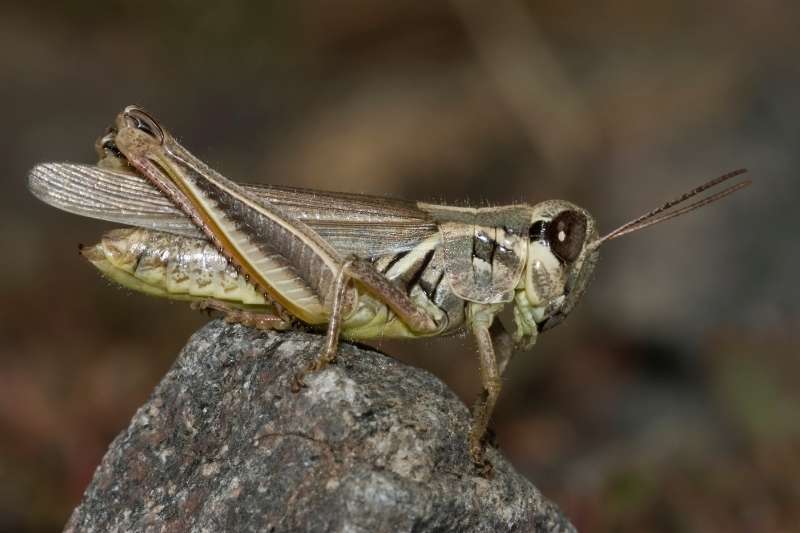
Crickets come into houses; grasshoppers don’t
House crickets (Acheta domestica) are a type of true cricket which live their lives alongside humans in buildings – they’re adapted to it and feed on crumbs and food scraps common in bakeries, breweries and kitchens. Field crickets (Gryllus pennsylvanicus) are attracted to lights and so are sometimes tempted to venture into warm, quiet houses.
In contrast, grasshoppers don’t enter buildings, even accidentally; they’re too big to sneak through gaps in doors like crickets can, aren’t attracted to lights, and are not tempted to go indoors because the plants on which they feed are outside.
Also grasshoppers are diurnal, meaning they are most active during the day. At night, they are quietly hiding, hoping they will remain inconspicuous and survive the night.
Crickets are nuisances; grasshoppers wreak destruction
For the most part, crickets like Gryllus pennsylvanicus live their lives unnoticed by the humans around them. We notice them the most when one of them wanders into our home. Field crickets will eat fabric and leather, especially if they find perspiration or food particles attached to the fabric. Male crickets will chirp intermittently for hours on end trying to lure a mate which can drive a homeowner absolutely crazy.
Crickets are omnivorous. They will eat dead or dying insects when they encounter them but mostly eat plant material, including roots, stems, and young, tender seeds. However, they are not major pests of commercial agriculture or home gardens unless the sheer concentration of crickets within a small area gets really large, which is rare.
Grasshoppers are a whole different story. They cause millions of dollars worth of damage to agricultural crops every year by chewing incessantly on foliage. Species that swarm are especially destructive. To learn about how some short-horned grasshoppers turn into “locusts”, check out my post “What is the difference between grasshoppers and locusts?“
Crickets chirp; grasshoppers buzz
As noted above, “singing” is an important behavior to both crickets and grasshoppers. The males create sound by scraping special structures on their wings in a process called “stridulation” and the noise attracts females. Scientists have studied stridulation extensively and have written entire volumes on the differences between the songs generated within the same species, as well as comparisons between songs of different Orthopterans.
Human ears tend to perceive cricket song as more pleasant than grasshopper song; crickets have even been kept as pets so people could enjoy their singing. Grasshopper song is a loud, buzzing, unceasing drone which sounds less pleasant to our ears.

Crickets have few defenses; grasshoppers have several
Both crickets and grasshoppers will jump to escape predators and will kick their powerful, spiny hind legs when seized. This is about the extent of a cricket’s active defenses but short-horned grasshoppers can employ a few other strategies as well.
Some species of grasshoppers exude foul-smelling, half-digested froth from their crops and respiratory spiracles when seized by predators.
Others, such as the southeastern lubber grasshopper, have evolved powerful poisons which they store within their body tissues; these poisons can sicken or even kill a predator. They advertise their toxic nature by being brightly colored. Over time, the predator population either learns to avoid eating these insects or evolves strategies to overcome this defense.
Band-winged grasshoppers, such as the Carolina locust (Dissosteira carolina), employ “flash display” to distract and confuse their predators, which is not seen in crickets.
These grasshoppers have distinct colors or patterns on their hind wings which are hidden from view while the insect is at rest and the wings are folded away. When the grasshopper is attacked, it leaps into the air and flings its wings open; the bright pattern attracts the predator’s attention.
Assuming the grasshopper isn’t snatched out of the air, it lands and immediately folds its wings, hiding the bright pattern away and blending into its surroundings. Because the predator was visually focused on the bright pattern, it loses track of the grasshopper once the pattern disappears.
Crickets and grasshoppers are closely related cousins within order Orthoptera but have significant differences that make each type of insect unique. There are many more species of grasshoppers in North America than true crickets but both are commonly encountered and both are natural wonders that add immeasurably to our nearby natural world.
Order Orthoptera contains more types of insects than just true crickets and short-horned grasshoppers. To learn more about the long-horned variety of grasshoppers known as “katydids”, check out my post “What’s the difference between a grasshopper and a katydid?“
Related Now I Wonder Posts
For more about grasshoppers and other insects in order Orthoptera, check out these other Now I Wonder posts:
- What do grasshoppers do? A day in their life
- What is the difference between grasshoppers and locusts?
- What’s the difference between a grasshopper and a katydid?
- What is the difference between cicadas and grasshoppers?
For information about insects in general, check out these other Now I Wonder posts:
- Do insects ever eat spiders? Part 1: Attacks from the air
- Do insects ever eat spiders? Part 2: Attacks from the ground
- Do insects have blood?
Bibliography
Alexander, Richard D., and Daniel Otte. “Crickets.” In Encyclopedia of Insects, edited by Vincent H. Resh, and Ring T. Carde. 2nd ed. Elsevier Science & Technology, 2009.
“Fall Field Cricket.” In Handbook of Vegetable Pests, by John L. Capinera. Elsevier Science & Technology, 2001.


